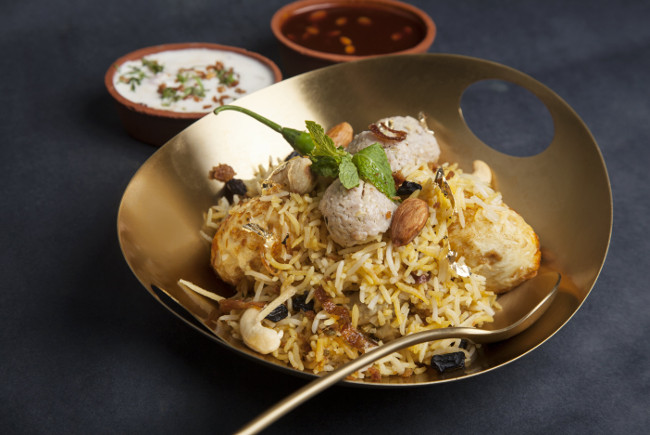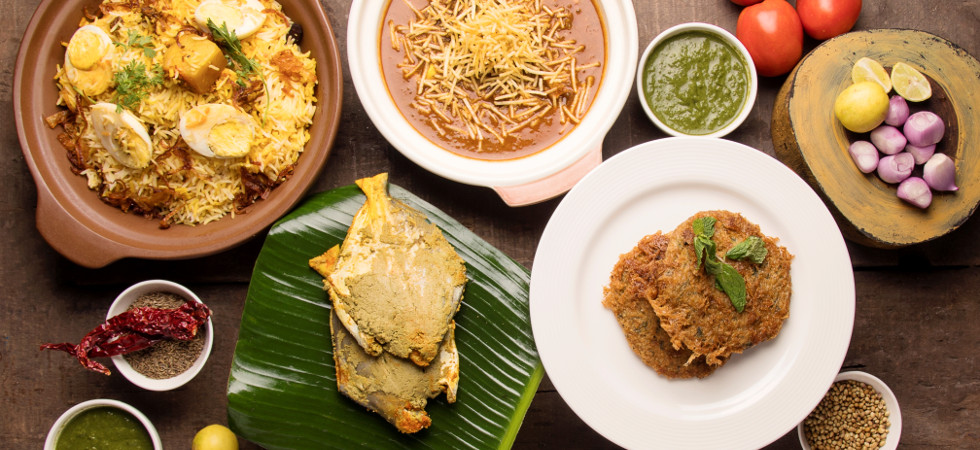Parsis are known to be a very jovial community. They enjoy living life to the hilt and food plays a very important role in all Parsi festivals. Parsi cuisine is expansive and has several interesting dishes. This cuisine has some pretty eclectic flavors. Parsis as a community were influenced by the West and it reflects in their cuisine. The Parsis have a fondness for nuts, dry fruit and sweet flavors which is also obvious looking at their dishes. The addition of onions, garlic and ginger in Parsi cuisine is the result of the Indian influence.
Lagan nu custard, a dessert served at weddings and made with condensed milk, nuts and raisins and Akoori (a popular, spicy dish similar to scrambled eggs) are obvious examples of the Western influence. Parsis enjoy celebrating with elaborate feasts and it becomes obvious during their festivals and other occasions such as their marriages and birthdays. They serve bottles of colorful aerated drinks with lots of mouth watering dishes.

‘Ravo’, a popular dish cooked with semolina, milk and sugar, flavored with rose water, sprinkled with grated nutmegs and falooda is offered to those who visit Parsi homes on Navroz, the Parsi New Year. Parsis consider fish a symbol of good luck. Fish steamed in banana leaves known as patra ni macchi is a well known Parsi specialty. Pulav, an amazing rice preparation, similar to biryani is prepared with chunks of spiced mutton or chicken. Another popular dish is sali murghi, a chicken preparation served with straw potatoes. Lagan nu achaar (carrot and dry fruit pickle) is also very popular with everyone.
JW Marriott Hotel Pune recently hosted an elaborate Parsi food festival at Spice Kitchen. Curated by home-chef Rhea Mitra-Dalal, I was at first glance impressed by the interesting ambience created by the hotel’s team. The menu consisted of some traditional favourites with a slight twist to pleasantly surprise and awaken the palate and to add something new and interesting.
Non-vegetarian delights such as Mini Chicken Farchas, Gos No Bafaat, Antheli Marghi, Saas Ni Machhi, Tarela Boomla, Bheja Nu Chhobat, Taadi Ma Gos, Kolmi No Patio and the vegetarian preparations such as Khaman Pattice, Mung Ni Daar Ne Papeta, Brinjal Capsicum Salnoo, Ravaiyya, Lagan Nu Istew and Vagharela Faraj Beej making it a menu which catered to everyone’s preferences. For desserts, the menu showcased traditional favourites such as Kesri Ravo, Pao Nu Pudding, Karkarias with Vanilla Ice Cream, Elaichi Jaiphal Powder and Sweet Banana Fritters, Falooda and Lagan Nu Custard.

Rhea Mitra-Dalal is a Home Chef, blogger, freelance writer, and food entrepreneur. A qualified archaeologist, she has a special interest in the history and archaeology of food. When she is not writing up delicious recipes for her blog or helming affairs at the family-run Katy’s Kitchen, she can be found cooking home-style Parsi and Bengali delicacies. She said, “Most people think Parsi food will be meat-centric and that it’s only dhansak and patra ni machhi. In this festival I showcased a wide range of vegetarian dishes that are regularly made in Parsi homes and dishes beyond the well known ones.
Preparations like Ravaiyya (brinjals in green chutney), sambhariya bheeda (lady fingers in Parsi masalas), suran ma gos (mutton cooked with elephant’s foot yam), and chicken mhaiwala (Parsi baked chicken with eggs and dry fruits) are some of the lesser known dishes that were on my menu. The best compliment I received was when a Parsi guest came up to me and said she hadn’t eaten such good Parsi food outside of her home in a very long time!”






















